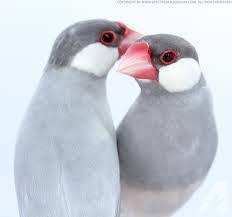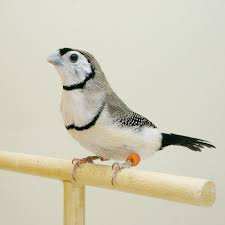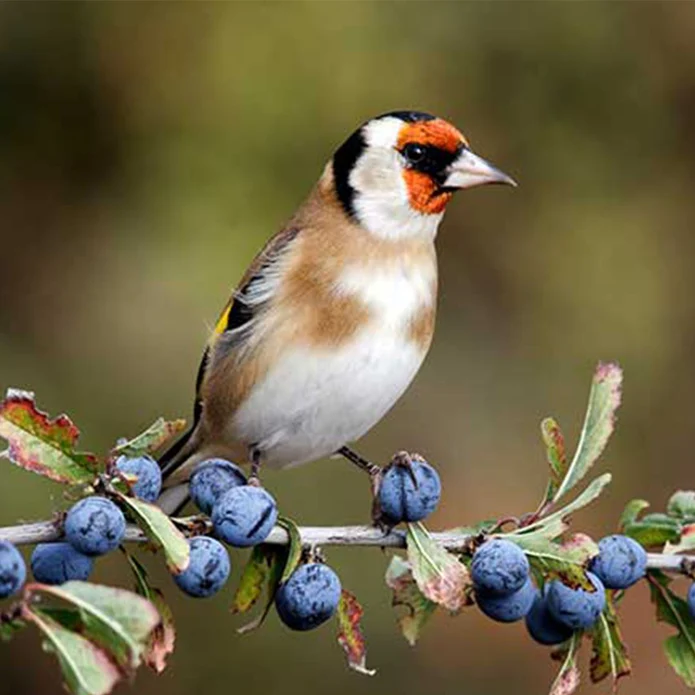Red Headed Finch
Red Headed Finch (or House Finches) are a more recent species introduced from western North America to Eastern North America. Due to their cheerful red heads and beautiful twittering song, the Red Finch has received a warmer welcome than some other arrivals, like the House Sparrows and European Starlings.
You’ve probably heard their long songs throughout your neighborhood, and if you haven’t spotted one yet, the chances are that you’ll see one soon at the next bird feeder you walk past.
Finches For Sale
Lady Gouldian Finch – Orange Head Green Back
Black-Hooded Siskin Finch Bird
How to ID A Red Headed Finch
There are four keys to identifying a Red Finch:
1. Size and Shape
Red Finches have small bodies with long, flat heads and fairly large beaks for their size. Their wings are short, making their tails seem extra-long by comparison. Most species of finches have distinctly notched tails; however, the Red Finch’s tail notch is relatively shallow.
- Length: 5.5 to 5.5 inches
- Weight: 0.6 to 0.9 ounces
- Wingspan: 7.9 to 9.8 inches
2. Color Pattern
Adult male Red Finches have a rosy red color on their upper breasts and around their faces, with a brown back, tail, and belly. During flight, you’ll also notice their red rump. Adult females are grayish-brown with blurry, thick streaks and a relatively indistinctly marked face.
Red Finches can look rather different from one another (especially males). However, their colorings come from their diet instead of regional differences. And even though all of North America’s Red Finches descend from the same few birds and are more closely related to each other than most species, there aren’t any significant differences between the two regions in terms of size, shape, and color.
3. Behavior
Red Finches are a gregarious species; they collect at feeders and will perch high in any nearby trees. When the birds aren’t at a bird feeder, they’ll feed on weed stalks, the ground, or in the trees. Red Finches move quite slowly and will sit perfectly still as they shell seeds and crush them with rapid bites. Like many finches, their flights seem quite bouncy.
Related: American Robin: ID and Overview
4. Habitat
You’ll frequently see Red Finches in backyards, city parks, forest edges, farms, and urban centers across North America. In the western US, you can find Red Finches in their native habitats: open woods, grasslands, chaparrals, and deserts.

Where to Red Headed Finch (or House Finches)
You can find Red Finches by looking around habitats where people settle, like city parks, residential backyards, etc. They are social and gregarious; you’ll often see them in noisy, large groups that are difficult to miss. You’ll also want to watch around bird feeders and for Red Finches feeding on the ground or perching at the top of nearby trees.
You’ll find them across eastern and western North America and southern Canada all year long —they don’t typically migrate between seasons.
To attract Red Finches, you’ll want to fill your feeders with black oil sunflower seeds. However, once they discover your feeder, they might come back with a flock of 50+ Red Finches in tow!
Fun Facts About Red Finches
Did you know these facts about Red Finches?
- Red Finches originally came from Mexico and the western US. However, in 1940, a small number of the birds were turned loose in New York after a failed attempt at selling them as cage birds. They bred quickly and started spreading across southern Canada and the entire eastern US over the next 50 years.
- Red Finches were introduced to Hawaii from San Francisco sometime prior to 1870. By 1901, the population became abundant on all of the major Hawaiian islands.
- Birds can’t have red colors directly — the red of a male Red Finch comes from the pigments their food contains during molt. The more pigment in their food, the brighter red the colors. It’s not uncommon to see orange or yellow Red Finches because of this fact. However, females prefer the reddest males they can find, presumably because they have a better chance at helping feed the nestlings.
- Red Finches only feed their nestlings plant food, which is fairly rare in the bird world. Even though many species become vegetarians as adults, they still feed their young animal foods for protein — not the Red Finch.
- Red Finches can live quite a long time — the longest-living of the species was a female that was just over 11 and a half years old. She was banded in New York in 1973 and recaptured and rereleased in 1985.










